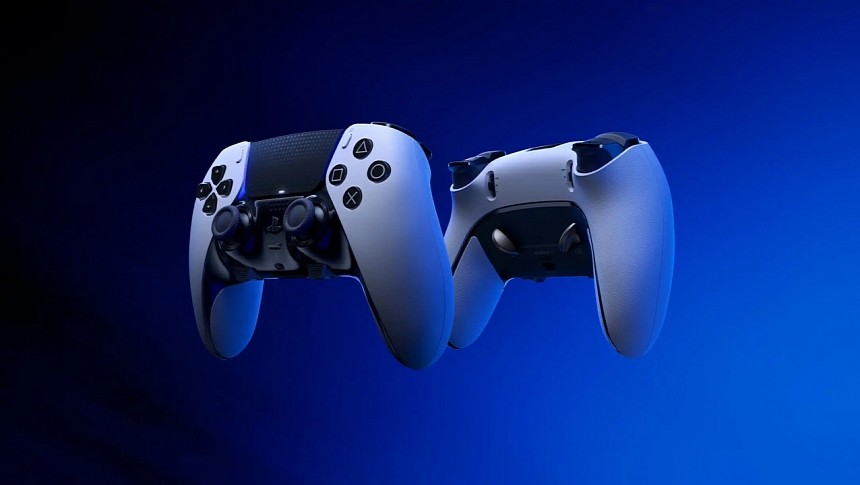You might have heard or read lately that Sony patented a controller that could change temperature. While it does sound like it sits on the edge between gimmicky and brilliant, it's not the first time this has happened before, and it also doesn't mean it will 100% see the light of day. Not all patents actually make it to the commercial phase, but it's good for companies to have on hand, just in case. Now, if this thing ever comes out, how could it impact your gaming experience with racing or flight sims?
The patent talks about certain areas from a controller made from a gel-like substance, which would be quite the departure from the regular hard plastic we're all used to since the arcade cabinets of old. This "elastically deformable material" would be able to respond to basic touching, pressing, twisting, pinching, rubbing, and pretty much any human input of this sort.
When the haptic feedback or controller vibration would occur, it would also change the temperature of the elastic material, which in turn would provide a different hardness, depending on the pre-programmed in-game settings. Basically, you'll get two physical feedback inputs for your hand to associate with certain in-game actions.
Imagine you could shift gears up or down by simply squeezing the left or right sides of the controller if you set it to manual. This way you wouldn't have to press anything else by moving your finger from the break or gas triggers to the face buttons (ABXY).
Or maybe it could go from cold to hot and back depending on the rev counter from your vehicle, thus letting you know when it's time to shift up or down. Perhaps twisting the "handles" from the controller in motorcycle games would make for a totally new experience.
Another cool example would be the pit stop tire changes in F1 games, prompted by the temperature change. Imagine starting off with the deformable parts as cold as they can be, and the longer you drive, the hotter they get, letting you know physically when you should head for a pit stop.
Not to mention when you're drifting almost completely sideways at 100 mph, it could mirror that through heat and deformation.
It could even be great for kids with small hands that could accelerate or brake just by squeezing the lower parts of the controller, leaving just the joysticks for the car and camera controls.
While this patent is far from a guarantee that such a device will ever see the inside of a store, it sure opens up conversations about what the future of gaming inputs might be like. Just imagine what an entire steering wheel controller setup featuring this sort of tech would imply.
The possibilities in 2D games, but also in VR aren't endless, but they sure are entertaining, especially when you think about the accessibility features this could have for people with disabilities.
When the haptic feedback or controller vibration would occur, it would also change the temperature of the elastic material, which in turn would provide a different hardness, depending on the pre-programmed in-game settings. Basically, you'll get two physical feedback inputs for your hand to associate with certain in-game actions.
Imagine you could shift gears up or down by simply squeezing the left or right sides of the controller if you set it to manual. This way you wouldn't have to press anything else by moving your finger from the break or gas triggers to the face buttons (ABXY).
Or maybe it could go from cold to hot and back depending on the rev counter from your vehicle, thus letting you know when it's time to shift up or down. Perhaps twisting the "handles" from the controller in motorcycle games would make for a totally new experience.
Another cool example would be the pit stop tire changes in F1 games, prompted by the temperature change. Imagine starting off with the deformable parts as cold as they can be, and the longer you drive, the hotter they get, letting you know physically when you should head for a pit stop.
Not to mention when you're drifting almost completely sideways at 100 mph, it could mirror that through heat and deformation.
It could even be great for kids with small hands that could accelerate or brake just by squeezing the lower parts of the controller, leaving just the joysticks for the car and camera controls.
While this patent is far from a guarantee that such a device will ever see the inside of a store, it sure opens up conversations about what the future of gaming inputs might be like. Just imagine what an entire steering wheel controller setup featuring this sort of tech would imply.
The possibilities in 2D games, but also in VR aren't endless, but they sure are entertaining, especially when you think about the accessibility features this could have for people with disabilities.
























